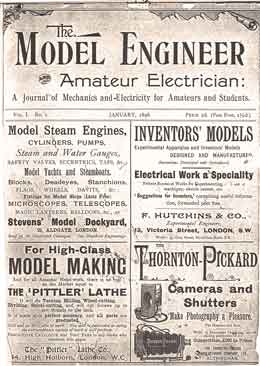First Radio Hams / Amateurs
The foundations in history of amateur radio or ham radio starts were set in place with some of the early discoveries.
Ham Radio History Includes:
Ham radio history overview
Early foundations
First radio hams
Early ham radio equipment
Licenses introduced
Callsigns
National societies
First World War
Trans-Atlantic contacts
Just before the end of the 1800s, there was a high level of interest in the new and almost magical demonstrations of wire-less technology. This interest played a significant role in the history of amateur radio.
There were even public demonstrations and this fired the interest of a number of private people, some of whom would become the first radio amateurs.
First radio amateur
Around the turn of the19th / 20th century, wireless was totally unregulated. Even scientists were struggling with how it worked and what it could be used for. As a result, unlike today, no licenses were required. Anyone could build a transmitter and receiver and experiment.
In view of this freedom, people started to build their own equipment and experiment.It is difficult to ascertain with exact certainty who was the first radio amateur because no records were generally taken.
However the first recorded "amateur radio" station could have been that of M.J.C. Dennis in London, UK in 1898. He heard about the experiments being conducted by Marconi and as a result he set up his own station at Woolwich Arsenal in East London.
Dennis claimed that his was the first non-professional wireless station in the world - and in this way he was the world's first radio amateur. This claim appears not to have been challenged. Later Dennis held the call DNX and afterwards he moved to Eire. Here he held the call EI2B and was reputed to also have been the first Irish amateur radio station. He also became the first president of the Irish Radio Transmitters' Society, IRTS.
Magazines inspire first radio amateurs
The interest in wire-less transmission spawned a large number of magazine articles and books giving practical details of how wire-less equipment could be built.
In January 1898 a magazine entitled called "The Model Engineer and Amateur Electrician" included an article by Leslie Miller AIEE which gave details of experiments for amateurs. In it there were details of basic transmitting and receiving apparatus.

The article was entitled "Some Interesting Experiments for Amateurs" and it starts by saying: "When amateur electricians read in the daily newspapers that a special grant of money was asked for in Parliament for carrying out experiments with Marconi's apparatus for signalling without line wires and that a skilled staff had all the resources of the British Post Office at command, they probably thought trials on their own were out of reach."
Miller uses the article to describe this was not so and that radio amateurs, or as he referred to them, amateur electricians, could still take part and perform amateur experiments on their own.
Miller went on to publish more articles in later editions, indicating that he too was one of the first radio amateurs or first radio hams.
Although there is no record of him claiming to be the first radio amateur or to have the first ham radio station, he was certainly amongst the very first amateurs, if not the first along with M. J. C. Dennis.
Within the USA the interest started to arise and this can be seen by the publication in the American Electrician dated July 1899 in which an article entitled "The Apparatus for Wireless Telegraphy" by Professor Jerome J Green. In this article, Professor Green detailed the apparatus required for a transmitter, a receiver (using a coherer) and the antenna.
Book publications
A book called "Wireless Telegraphy and Hertzian Waves" by S. Bottone published just after the turn of the century gave a comprehensive explanation about the subject as well as detailing how the necessary apparatus could be constructed. Typically a coherer could be made from a glass tube, a couple of corks for either end, some iron filings and two copper wires. Descriptions for making transmitting apparatus were also included.
These very practical explanations of how to build wire-less equipment further fuelled the public interest.
Who was the first radio ham?
It is very difficult to ascertain who really was the first radio amateur. At the time there was no definition of what a radio amateur was, let along anyone recording the records. Some say it could have been Marconi, when he started experimenting at home as he certainly was not a professional then. Others even say it may have been Professor D E Hughes who made a spark transmitter at home without knowing the medium that enabled him to detect sparks in a remote receiver. Was it M.J.C Dennis DNX, EI2B who set up an amateur station in East London, or was it Leslie Miller who wrote for the Model Engineer & Amateur Electrician. It could even have been somebody else.
What is certain is that many people started to experiment towards the end of the 1800s, and this interest began to grow - the history of amateur radio shows at this point the hobby started to become established..
 Written by Ian Poole .
Written by Ian Poole .
Experienced electronics engineer and author.
More History:
Radio history timeline
History of the radio
Ham radio history
Coherer
Crystal radio
Magnetic detector
Spark transmitter
Morse telegraph
Valve / tube history
PN junction diode invention
Transistor
Integrated circuit
Quartz crystals
Classic radios
Mobile telecoms history
Vintage mobile phones
Return to History menu . . .



